
The F/A-18 "Hornet" is a single- and two-seat, twin engine, multi-mission fighter/attack aircraft that can operate from either aircraft carriers or land bases. The F/A-18 fills a variety of roles: air superiority, fighter escort, suppression of enemy air defenses, reconnaissance, forward air control, close and deep air support, and day and night strike missions. The F/A-18 Hornet replaced the F-4 Phantom II fighter and A-7 Corsair II light attack jet, and also replaced the A-6 Intruder as these aircraft were retired during the 1990s.
The F/A-18 has a digital control-by-wire flight control system which provides excellent handling qualities, and allows pilots to learn to fly the airplane with relative ease. At the same time, this system provides exceptional maneuverability and allows the pilot to concentrate on operating the weapons system. A solid thrust-to-weight ratio and superior turn characteristics combined with energy sustainability, enable the F/A-18 to hold its own against any adversary. The power to maintain evasive action is what many pilots consider the Hornet's finest trait. In addition, the F/A-18 was also the Navy's first tactical jet aircraft to incorporate a digital, MUX bus architecture for the entire system's avionics suite. The benefit of this design feature is that the F/A-18 has been relatively easy to upgrade on a regular, affordable basis.
The F/A-18 has proven to be an ideal component of the carrier based tactical aviation equation over its 15 years of operational experience. The only F/A-18 characteristic found to be marginally adequate by battle group commanders, outside experts, and even the men who fly the Hornet, is its range when flown on certain strike mission profiles. However, the inadequacy is managed well with organic and joint tanking assets.
F/A-18A/B Hornet
While the general configuration of the YF-17 was retained, the F-18 became a completely new airplane. To meet the single-place fighter and attack mission capability, full use was made of new technology in digital computers. Coupled with cathode ray tubes for cockpit displays and appropriate controls based on thorough pilot evaluations in simulators, a single airplane and subsystems configuration for both missions was evolved
During development, two-place trainer versions were added, to be built in limited numbers as TF/A-18s, intermingled with the basic F/As. Minimum changes were made to incorporate the second cockpit, with the two-seat airplanes retaining the ability to perform combat missions.
Making the first flight in November 1978, the F/A-18 and its two-place derivative [subsequently redesignated the F/A-18B] underwent most of their development testing at the Naval Air Test Center under the new single-site testing concept. While much attention was focused on development problems, these were largely typical of those in any new program, with their resolution being part of the development process. For the most part, these occurred in the basic aircraft hardware rather than in the digital electronic systems.
The original F/A-18A (single seat) and F/A-18B (dual seat) became operational in 1983 replacing Navy and Marine Corps F-4s and A-7s. It quickly became the battle group commander's mainstay because of its capability, versatility and availability. Reliability and ease of maintenance were emphasized in its design, and F/A-18s have consistently flown three times more hours without failure than other Navy tactical aircraft, while requiring half the maintenance time.
The Hornet has been battle tested and has proved itself to be exactly what its designers intended: a highly reliable and versatile strike fighter. The F/A-18 played an important role in the 1986 strikes against Libya. Flying from USS CORAL SEA (CV 43), F/A-18s launched high-speed anti-radiation missiles (HARMs) against Libyan air defense radars and missile sites, effectively silencing them during the attacks on Benghazi facilities.
F/A-18C/D Hornet
Following a successful run of more than 400 A and B models, the US Navy began taking fleet deliveries of improved F/A-18C (single seat) and F/A-18D (dual seat) models in September 1987. These Hornets carry the Advanced Medium Range Air-to-Air Missile (AMRAAM) and the infrared imaging Maverick air-to-ground missile. Two years later, the C/D models came with improved night attack capabilities. The new components included a navigation forward looking infrared (NAVFLIR) pod, a raster head-up display, night vision goggles, special cockpit lighting compatible with the night vision devices, a digital color moving map and an independent multipurpose color display.F/A-18Cs have synthetic aperture ground mapping radar with a doppler beam sharpening mode to generate ground maps. This ground mapping capability that permits crews to locate and attack targets in adverse weather and poor visibility or to precisely update the aircraft's location relative to targets during the approach, a capability that improves bombing accuracy. New production F/A-18Cs received the APG-73 radar upgrade radars starting in 1994, providing more precise and clear radar displays.
The F/A-18C Nigh Attack Hornet has a pod-mounted Hughes AN/AAR-50 thermal imaging navigation set, a Loral AN/AAS-38 Nite Hawk FLIR targeting pod, and GEC Cat's Eyes pilot's night vision goggles. Some 48 F/A-18D two-seat Hornets are configured as the F/A-18D (RC) reconnaissance version, with the M61A1 cannon replaced by a pallet-mounted electro-optical suite comprising a blister-mounted IR linescan and two roll-stabilized sensor units, with all of these units recording onto video tape.
On the first day of Operation Desert Storm, two F/A-18s, each carrying four 2,000 lb. bombs, shot down two Iraqi MiGs and then proceeded to deliver their bombs on target. Throughout the Gulf War, squadrons of U.S. Navy, Marine and Canadian F/A-18s operated around the clock, setting records daily in reliability, survivability and ton-miles of ordnance delivered.
The Navy announced 18 May 1998 that its East Coast F/A-18 squadrons will relocate to Naval Air Station Oceana in Virginia Beach VA and Marine Corps Air Station Beaufort in Beaufort, SC. The jets will move from Naval Air Station Cecil Field in Jacksonville FL which was ordered closed by the 1995 Base Realignment and Closure Commission. Nine operational squadrons and the Fleet Replacement Squadron -- a total of 156 planes -- will move to Oceana. Two squadrons totaling 24 planes will move to Beaufort. The first squadron will move in the fall of 1998 and all 11 fleet squadrons and the Fleet Replacement Squadron completed their moves by October 1999.
Throughout its service, annual upgrades to F/A-18 weapon systems, sensors, etc. continued. The latest lot of the F/A-18C/D has grown to be far more capable (night attack, precision strike, low observable technologies, etc.) than the original F/A-18A/B; however, by 1991, it was becoming clear that avionics cooling, electrical, and space constraints would begin to limit future growth. Additionally, another operational deficiency was beginning to develop. As the F/A-18C/D empty weight increased the aircraft were returning to the carrier with less than optimal reserve fuel and/or unexpended weapons. The additional range and "bring back" is not as essential to shore based operations. F/A-18A/B/C/D aircraft will fly for years with the U.S. Marine Corps and eight international customers: Australia, Canada, Finland, Kuwait, Malaysia, Spain, Switzerland and Thailand. Although the F/A-18C/D's future growth is now limited, it will also continue to fill a critical role in the U.S. Navy's carrier battle group for many years to come and will be an excellent complement to the larger, longer range, more capable F/A-18E/F Super Hornet.
F/A-18E/F "Super Hornet"
The multi-mission F/A-18E/F "Super Hornet" strike fighter is an upgrade of the combat-proven night strike F/A-18C/D. The Super Hornet will provide the battle group commander with a platform that has range, endurance, and ordnance carriage capabilities comparable to the A-6 which have been retired. The F/A-18E/F aircraft are 4.2 feet longer than earlier Hornets, have a 25% larger wing area, and carry 33% more internal fuel which will effectively increase mission range by 41% and endurance by 50%. The Super Hornet also incorporates two additional weapon stations. This allows for increased payload flexibility by mixing and matching air-to-air and/or air-to-ground ordnance. The aircraft can also carry the complete complement of "smart" weapons, including the newest joint weapons such as JDAM and JSOW.
The Super Hornet can carry approximately 17,750 pounds (8,032 kg) of external load on eleven stations. It has an all-weather air-to-air radar and a control system for accurate delivery of conventional or guided weapons. There are two wing tip stations, four inboard wing stations for fuel tanks or air-to-ground weapons, two nacelle fuselage stations for Sparrows or sensor pods, and one centerline station for fuel or air-to-ground weapons. An internal 20 mm M61A1 Vulcan cannon is mounted in the nose.
Carrier recovery payload is increased to 9,000 pounds, and its engine thrust from 36,000 pounds to 44,000 pounds utilizing two General Electric F414 turbo-fan engines. Although the more recent F/A-18C/D aircraft have incorporated a modicum of low observables technology, the F/A-18E/F was designed from the outset to optimize this and other survivability enhancements.
The Hughes Advanced Targeting Forward-Looking Infra-Red (ATFLIR), the baseline infrared system for the F/A-18 E/F, will also be deployed on earlier model F/A-18s. The Hughes pod features both navigation and infrared targeting systems, incorporating third generation mid-wave infrared (MWIR) staring focal plane technology.
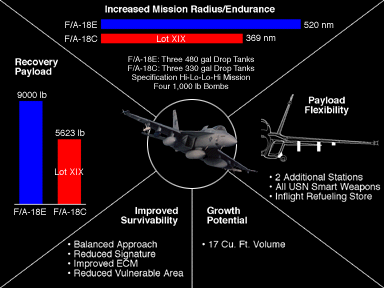
Features of the F/A-18 E/F Super Hornet:
- 90% Common F/A-18C/D Avionics: Avionics and software have a 90 percent commonality with current F/A-18C/Ds. However, the F/A-18E/F cockpit features a touch-sensitive, upfront control display; a larger, liquid crystal multipurpose color display; and a new engine fuel display.
- 34 in. Fuselage Extension: The fuselage is slightly longer - the result of a 34-inch extension.
- Two Additional Multi-Mission Weapons Stations: Super Hornet has two additional weapons stations, bringing the total to 11. For aircraft carrier operations, about three times more payload can be brought back to the ship.
- 25% Larger Wing: A full 25 percent bigger than its predecessor, Super Hornet has nearly half as many parts.
- 35% Higher Thrust Engines: Increased engine power comes from the F414-GE-400, an advanced derivative of the Hornet's current F404 engine family. The F414 produces 35 percent more thrust and improves overall mission performance. Enlarged air inlets provide increased airflow to the engines.
- 33% Additional Internal Fuel: Structural changes to the airframe increase internal fuel capacity by 3,600 pounds, or about 33 percent. This extends the Hornet's mission radius by up to 40 percent.
The Navy is planning to procure a minimum of 548 Super Hornets, and possibly as many as 1,000. These numbers could vary depending on the progress of the Joint Strike Fighter Program. As part of the Quadrennial Defence Review (QDR) production of the Super Hornet was cut from 1000 to 548 units. Production of the aircraft commenced in FY 1997, and it attained initial operational capability (IOC) in FY 2001 as VFA-115 became the first unit to transition to the Super Hornet. Twelve aircraft were funded in FY 1997; procurement numbers increase to 20 in FY 1998, 30 in FY 1999, and reach a final maximum rate of 48 per year in FY 2001.
F/A-18G "Growler"
The EA-6B will begin retirement in the 2010 timeframe, after a career that exceeded 40 years of deployments in support of USN, USMC, and USAF strike forces. As of early 2000, Defense Department planning for replacing the EA-6B Prowler include a scheme under which the Navy would buy an F/A-18G "Growler" -- an F/A-18E/F modified for escort and close-in jamming. The Air Force would provide standoff jamming with modified EB-52s or EB-1s, and close-in jamming with unmanned air vehicles such as the Northrop Grumman Global Hawk or General Atomics Predator.Specifications | ||
| Contractor | Boeing [McDonnell Douglas
Aerospace] and Northrop Grumman (Airframe), General Electric (Engines), and Hughes (Radar) | |
| F/A-18C/D Hornet | F/A-18E/F Super Hornet | |
| Power Plant | Two F404-GE-402 afterburning engines, each in the 18,000 pound thrust class, which results in a combat thrust-to-weight ratio greater than 1-to-1. Depending on the mission and loading, combat radius is greater than 500 nautical miles. | Twin F414-GE-400 engines, each in the 22,000 pound thrust class. On an interdiction mission, the E/F will fly up to 40 % further than the C/D. |
| Accommodations | ||
| Performance | Mach 1.7 | Mach 1.6 |
| Armament | M61 Vulcan 6-barrel rotary cannon with 520 rounds of 20mm ammunition is internally mounted in the nose AIM-9 Sidewinder AIM-7F Sparrow AIM-120 AMRAAM AGM-65E Maverick AGM-84 Harpoon AGM-88A HARM MK82 10 CBU-87 10 CBU-89 GBU-12 GBU-24 JDAM B-57 or B-61 Nuclear bomb | |
| Mission and Capabilities | ||
| Unit cost $FY98 [Total Program] | $39.5 million. | $60 million |
| Program Summary | F/A-18A/B first entered
operational service with the USN and USMC in 1982.
Since 1982, more than 1,458 F/A-18s have been procured for the USN and USMC and for the armed services in Canada, Australia, Spain, Kuwait, Switzerland, Finland, and Malaysia. In 1987, the upgraded C/D model (with enhanced mission avionics) was introduced and upgraded with a night/adverse weather mission capability, On Board Oxygen Generating System, APG-73 Radar Upgrade, enhanced performance F404-GE-402 engines, and upgraded mission computers. | The first flight of the F/A-18E/F occurred in December 1995; operational deliveries are scheduled for late 1999. |
External Dimensions | |||||||||||||||||||||||||||||||||||||||
F/A-18C/D | F/A-18E/F | ||||||||||||||||||||||||||||||||||||||
|
|
||||||||||||||||||||||||||||||||||||||
Areas | |||||||||||||||||||||||||||||||||||||||
F/A-18C/D | F/A-18E/F | ||||||||||||||||||||||||||||||||||||||
|
|
||||||||||||||||||||||||||||||||||||||
Weights and Loadings |
|||||||||||||||||||||||||||||||||||||||
F/A-18C/D | F/A-18E/F | ||||||||||||||||||||||||||||||||||||||
|
|
||||||||||||||||||||||||||||||||||||||
Performance (At Maximum Takeoff Weight) |
|||||||||||||||||||||||||||||||||||||||
F/A-18C/D | F/A-18E/F | ||||||||||||||||||||||||||||||||||||||
|
|
Weapons Loads FA-18E
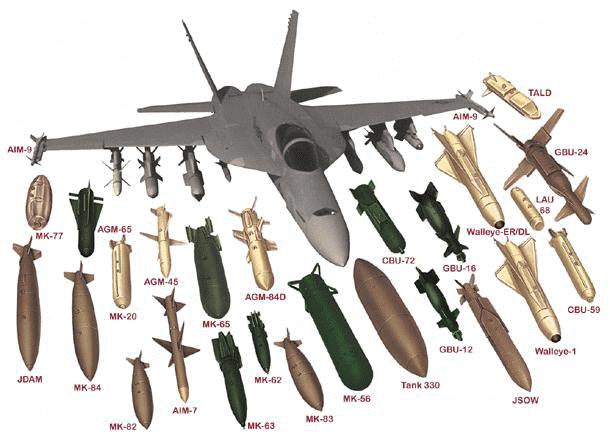
| MK | AGM | CBU | CBU | GBU | GBU | GBU | AIM | AIM | 20 | |
| 82 | 88 | 87 | 89 | 10 | 12 | 24 | JDAM | 9 | 120 | MM |
| 6 | 2 | 2 | 500 | |||||||
| 2 | 2 | 2 | 500 | |||||||
| 4 | 2 | 2 | 500 | |||||||
| 4 | 2 | 2 | 500 | |||||||
| 2 | 2 | 2 | 500 | |||||||
| 6 | 2 | 2 | 500 | |||||||
| 2 | 2 | 2 | 500 | |||||||
| 2 | 2 | 2 | 500 | |||||||
| 2 | 6 | 500 | ||||||||
| 8 | 500 |
| VRML 3-D Model | |
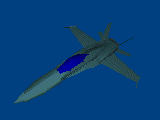 F-18 Hornet VRML by Soji Yamakawa |
 F-18 Hornet Blue Angels VRML by Soji Yamakawa |
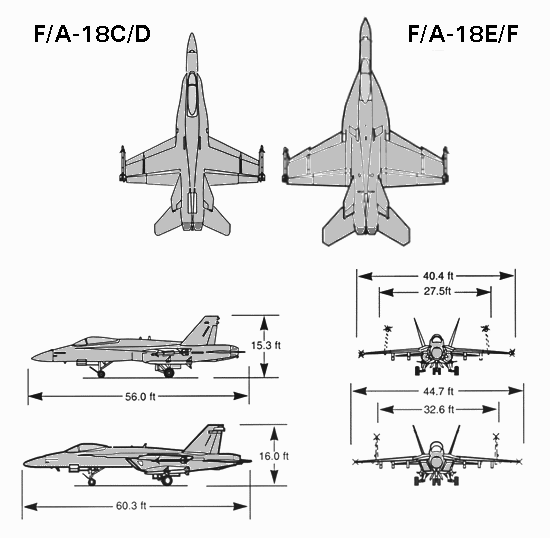
F/A-18
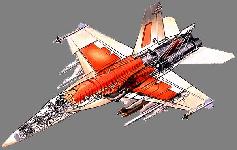
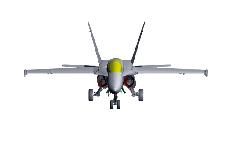
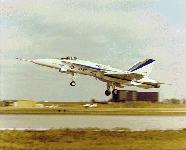
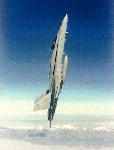
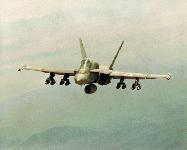
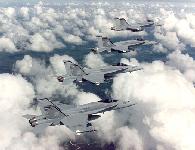
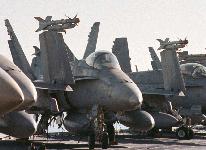

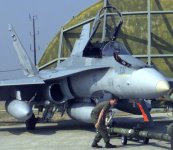
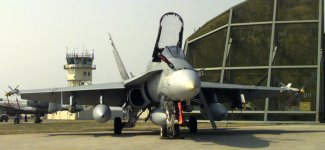

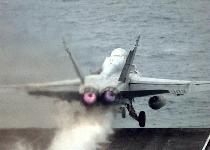
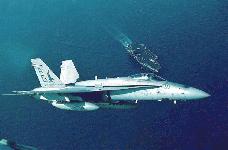

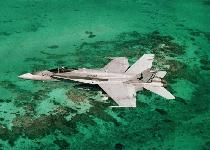
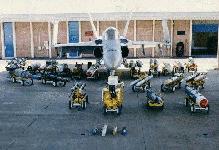
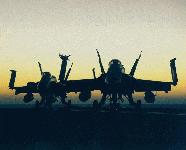
F/A-18E/F

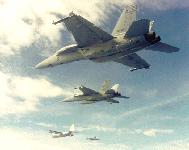
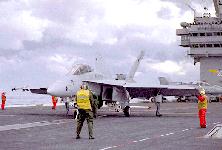
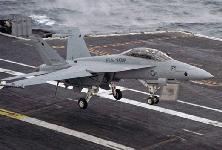
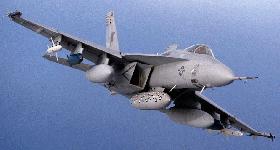
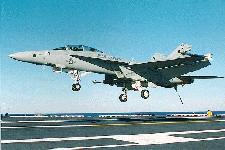
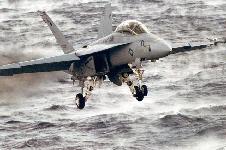
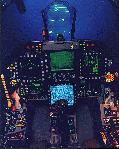







No comments:
Post a Comment